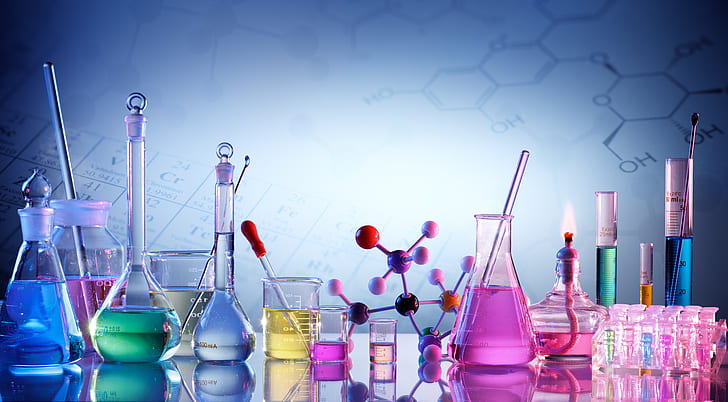The realm of forensic science, where evidence whispers secrets and clues paint vivid narratives, stands as a testament to humanity’s relentless pursuit of truth. Within this domain, both chemistry and biology reign supreme, each possessing unique strengths that contribute to unraveling the mysteries surrounding criminal investigations. The question then arises: Is chemistry or biology “better” for forensics? This query, however, oversimplifies a complex interplay. It is not a matter of superiority, but rather of distinct perspectives and methodologies that, when harmonized, provide a more comprehensive understanding of the forensic landscape. Think of it as choosing between a painter’s keen eye for color and texture (chemistry) versus a sculptor’s understanding of form and structure (biology). Both are essential for creating a masterpiece.
Let’s delve into the compelling arguments that each discipline presents.
Chemistry: Unveiling the Molecular Fingerprint
Chemistry in forensics acts as a meticulous analyst, dissecting substances at their most fundamental level: the molecular. This discipline excels at identifying and characterizing trace evidence, those seemingly insignificant remnants that often hold the key to unlocking a case. Imagine a single drop of blood at a crime scene. A forensic chemist can employ techniques like gas chromatography-mass spectrometry (GC-MS) to identify illicit drugs or poisons present, perhaps revealing a motive or method. Similarly, analyzing paint chips, fibers, or explosive residues falls under the purview of forensic chemistry.
The identification of controlled substances represents a cornerstone of forensic chemistry. From the clandestine synthesis of methamphetamine to the accurate quantification of heroin, chemistry provides the analytical tools necessary to combat drug-related crimes. Moreover, arson investigations heavily rely on chemical analysis to identify accelerants used to ignite fires. These analyses, like deciphering a complex code, can pinpoint the origin and nature of the blaze, differentiating between accidental fires and deliberate acts of arson.
A crucial technique within forensic chemistry is toxicology. This branch focuses on the detection and quantification of toxins and drugs in biological samples, such as blood, urine, and tissue. Toxicological analysis is paramount in determining the cause of death in cases of suspected poisoning or drug overdose. It’s akin to tracing the path of a hidden current, revealing the presence and concentration of harmful substances that may have contributed to the individual’s demise.
Isotopic analysis, a more specialized technique, offers another dimension to forensic investigations. By examining the ratios of different isotopes (atoms of the same element with varying numbers of neutrons) in materials, scientists can establish the origin and history of substances. This proves invaluable in tracing the source of illicit drugs, identifying counterfeit products, and even linking suspects to specific locations. It’s like reading a substance’s “life story,” tracing its geographical journey and manufacturing processes.
Biology: Deciphering the Code of Life
Biology, in the forensic context, focuses on the study of living organisms and their biological processes. Its strength lies in identifying and analyzing biological evidence, such as DNA, blood, semen, saliva, hair, and bones. DNA analysis, in particular, has revolutionized forensic science, providing a powerful tool for identifying suspects and exonerating the innocent.
DNA profiling, also known as DNA fingerprinting, involves analyzing specific regions of an individual’s DNA that vary significantly between individuals. This analysis generates a unique DNA profile that can be compared to DNA samples collected from crime scenes or from other individuals. The chances of two unrelated individuals having the same DNA profile are astronomically low, making DNA evidence highly reliable in criminal investigations. Think of it as each individual possessing a unique biological barcode, readily identifiable and irrefutably linked to them.
Beyond DNA, forensic biology encompasses a range of other analyses. Bloodstain pattern analysis (BPA) involves the examination of bloodstains to determine the events that occurred during a violent crime. BPA experts analyze the size, shape, distribution, and location of bloodstains to reconstruct the sequence of events and provide insights into the manner in which the crime was committed. This is akin to reading the story told by the spatter of blood, each drop a brushstroke in a macabre painting.
Forensic entomology, the study of insects in criminal investigations, can provide crucial information about the time of death, particularly in cases where decomposition is advanced. By analyzing the species of insects present on a body and their stage of development, entomologists can estimate the postmortem interval (PMI), the time elapsed since death. This is akin to reading the calendar of decay, where insects serve as biological clocks, meticulously marking the passage of time.
Forensic anthropology focuses on the analysis of skeletal remains to identify individuals and determine the cause and manner of death. Anthropologists can estimate age, sex, ancestry, and stature from bones, and they can also identify signs of trauma, such as fractures or gunshot wounds. They are the architects of the past, piecing together fragments of bone to reconstruct a life story.
Synergy, Not Supremacy: The Integrated Approach
Ultimately, the notion of one discipline being “better” than the other is a false dichotomy. The most effective forensic investigations often require a synergistic approach, combining the analytical power of chemistry with the biological insights of biology. Consider a case involving a suspicious death where toxicology reveals the presence of a specific poison. While chemistry identifies the poison, biology, through DNA analysis, might link the victim to a suspect who possesses the same poison. This collaborative approach provides a more complete and compelling picture of the events that transpired.
In conclusion, both chemistry and biology are indispensable tools in the forensic scientist’s arsenal. Chemistry unveils the molecular fingerprints of substances, while biology deciphers the code of life, providing unique insights into the intricate details of a crime. By embracing an integrated approach, forensic scientists can leverage the strengths of both disciplines to achieve a more comprehensive and accurate understanding of the truth, ensuring that justice prevails in the face of adversity. The best forensic science, therefore, isn’t about choosing one over the other, but about harmonizing their unique strengths to orchestrate a symphony of scientific truth.










Leave a Comment